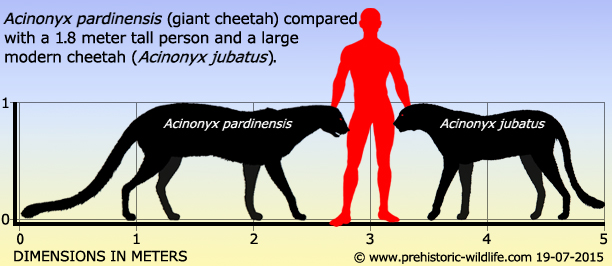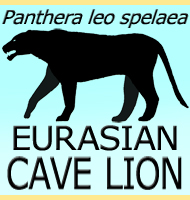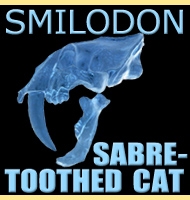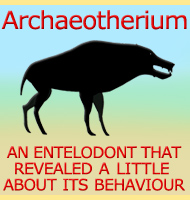


Acinonyx pardinensis
a.k.a. Giant Cheetah

Name: Acinonyx
pardinensis.
Phonetic: Ah-se-non-ix par-den-sis.
Named By: Brookes - 1828.
Classification: Chordata, Mammalia, Carnivora,
Felidae, Acinonyx.
Species: A. pardinensis.
Sub species: A. p. aicha, A. p.
arvernesis, A. p.pardinensis, A. p.pleistocaenicus, A.
p.intermedius, A. p. linxiaensis.
Diet: Carnivore.
Size: Roughly about 90 centimetres high at the
shoulder. Body length about 200 centimetres long, tail and
additional 140 centimetres in length.
Known locations: Across Europe, Asia and Africa
with fossils located in Austria, China, France, Germany,
India, Italy, Kenya, Morocco, Russia, South Africa,
Spain, Tajikistan and Tanzania.
Time period: End of the Pliocene/Early Pleistocene
through to the Holocene.
Fossil representation: Remains of many individuals
revealing most of the skull and skeleton.
Acinonyx
pardinensis, more colloquially known as the giant cheetah,
was a
prehistoric relative of the modern cheetah, Acinonyx jubatus.
The
modern cheetah typically ranges between 70-90 centimetres tall at
the shoulder, with a head and body length about 110-140
centimetres, with an additional 60-84 centimetres for the tail.
Acinonyx pardinensis stood about as tall as a large
modern cheetah but
the combined head and body length was significantly more reaching
around 200 centimetres, with a tail about 140 centimetres
long. What this means is that when seen from the side, Acinonyx
pardinensis would look like a modern cheetah that had
been
stretched out.
The
larger size of Acinonyx pardinensis might suggest a
preference for
slightly larger prey, though sprinting speed and agility would have
still been key to its hunting strategy. Like with the modern
cheetah, Acinonyx pardinensis had a short nasal
passage and wide
nostrils that allowed for a rapid exchange of oxygenated air into the
lungs. Attachment points for muscles connecting to bones also
indicate that Acinonyx pardinensis would have still
been lightly
built, all traits of a predator that would sneak close to prey before
exploding to a fast running speed to chase down prey when it was close
enough. Given that Acinonyx pardinensis fossils
have been commonly
found in fluvial wetland deposits, Acinonyx pardinensis
may have
targeted animals such as smaller deer which browsed upon wetland plants.
Fossil
remains of Acinonyx pardinensis are most commonly
found in fluvial
deposits suggesting that Acinonyx pardinensis
preferred to hunt on flat
expanses of land much like its modern day relative. However, some
fossils have been recovered from caves, once again revealing that
caves were hot property in the Pleistocene and sought out by much of
the fauna at the time. The fossils distribution of Acinonyx
pardinensis covers much of Africa and Eurasia and is
indicative of an
animal that was very successful before going extinct.
Acinonyx
pardinensis lived throughout the Pleistocene and even made it
into the
early Holocene, but went extinct soon after. Perhaps the most
likely cause of this extinction was climate change forcing a shift in
ecosystems and animals. Africa for example was once much wetter and
greener than it is today, but over the last few thousands of years
parts, the north especially has been drying out. This has seen
many of the rivers and flood plains drying out and being replaced at
best by savannah which are populated by animals that Acinonyx
pardinensis was not as well suited to hunt. The modern
cheetah
however which is better adapted to these environments has survived,
and has only been threatened by people hunting them for sport and to
protect livestock.
Further reading
- Acinonyx pardinensis (Carnivora, Felidae)
from the Early
Pleistocene of Pantalla (Italy): predatory behavior and
ecological role of the giant Plio-Pleistocene cheetah. -
Quarternary Science Reviews 87 82-97 - Marco Cherin, Dawid
Adam Iurino, Raffaele Sardella & Lorenzo Rool - 2014.
----------------------------------------------------------------------------
Random favourites
 |
 |
 |
 |




